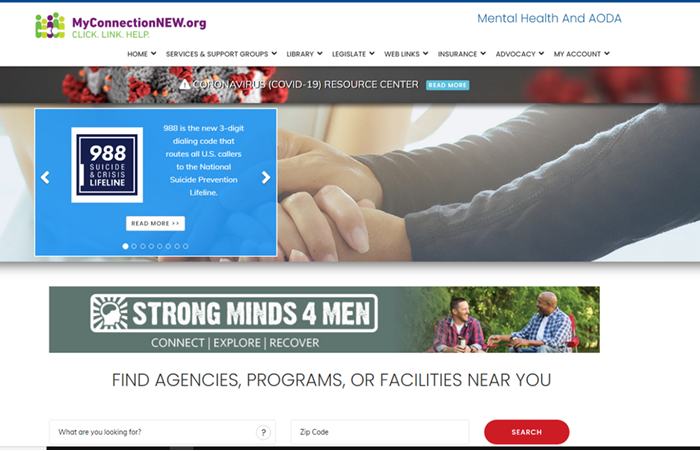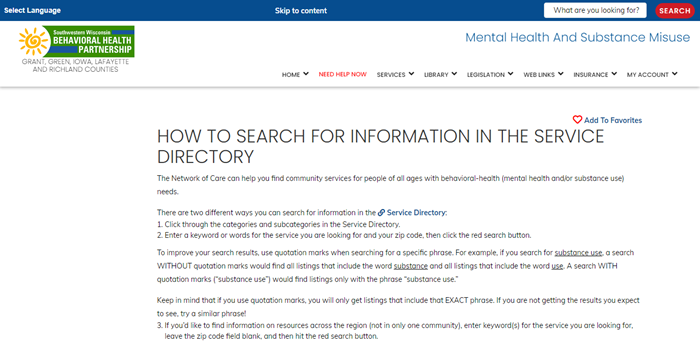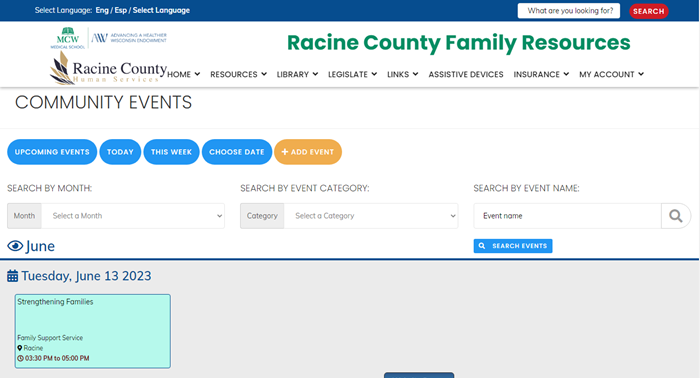Mental Health Resource Provider Website
Coalitions that Adopted
Southwestern Wisconsin Behavioral Health Partnership (SWBHP) - Grant, Green, Iowa, Lafayette & Richland Counties
Healthy Teen Minds – Calumet, Outagamie & Winnebago Counties
Connections for Mental Wellness – Brown County
Strategy Type
Community-based & Resources/AccessStrategy Goal
Improve regional mental health by providing and increasing access to mental health providers and resources, as well as increasing awareness of mental health issues.Intended Population
All community members in the region with access to the internet who may be interested in mental health services.Strategy Background
In communities across Wisconsin and throughout the nation, it can be difficult to navigate the mental health system of care. There may be long wait times for appointments, limited insurance coverage for various services, a complex referral process, and not all information online is up to date, which provides significant barriers to people seeking access to help and even discourages some from searching in the first place. To address this issue, four coalitions in Racine County, Southwestern Wisconsin, the Fox Valley and Brown County developed user-friendly websites featuring searchable listings of ALL mental health/wellness and substance use providers and resources in each region.
In addition to searchable local listings, each website features:
- “Need Help Now” resources, allowing users to connect immediately to crisis lines, hot lines, and warm lines for immediate assistance;
- A variety of anonymous mental health screening tools to help determine the need for professional help;
- A robust library of valuable mental health/substance use information;
- Quick links to insurance companies;
- Legislative links to track bills and connect to lawmakers; and
- Links to provide feedback, add and update listings
Each coalition’s website has been localized and tailored to meet the unique needs of each community. For example, Healthy Teen Minds from the Fox Valley and Connections for Mental Wellness from Brown County collaborated to develop a cross-coalition resource that stretches from Lake Winnebago to Green Bay. On the other hand, in Racine, a novel navigator pathway was developed for users to refer themselves or others to care.
The process, however, is a big lift requiring much time and financing, which is why the coalitions contracted with Trilogy Integrated Resources, a website development company focused on increasing accessibility to critical information and community-based programs in health and human services. Trilogy offers the ability to create a Network of Care website, with the goals of increasing accessibility, availability, and acceptability of mental health and substance use services. By providing a comprehensive listing of providers and resources, the platform makes it easier for individuals to find and connect with the support they need and increases the opportunity for early intervention.
This collaboration ensures that users have access to a more comprehensive range of resources and providers. The platform also serves to increase awareness of mental health issues and provide access to emotional support for individuals living with mental health issues and their families/social circles. It creates avenues for advocacy, education, and community building.
In short, a Network of Care website serves as a vital resource for individuals seeking mental health services, increasing accessibility, availability, and acceptability of these services. The platform provides a range of resources, from screeners to advocacy tools, that help users navigate their mental health journey.
“When seeking to change culture, who is engaged is as important as how much engagement occurs. Involving influential individuals who have strong social connections to champion the cause is at the core of creating successful cultural shifts.”
Strategy
In order to successfully implement a Network of Care site in your community, the coalitions have listed the following core components to guide you. While these items were key to each coalition's success in SW Wisconsin, the Fox Valley, Brown and Racine Counties, you should consider what changes might be necessary based on the needs and behavioral health environment of your own community.
"Before the website existed, the experience of the user was disjointed. When people continue to call a clinic for help, but they’re unavailable, people start to lose hope. No one should be ok with people losing hope before they’re able to find help, so you need to build around the idea of compassion in order to effectively create a lasting solution."
Statistics
Challenges & Tactics to Address Them
List of Challenges & Tactics
Did you know: The Racine County coalition was the first Network of Care site to create a referral pathway! They laid the groundwork for Trilogy to work with organizations throughout the nation to do the same.
"As a school counselor, I'm a resource for many; students, families and guardians, staff members, and more. This website gives me information at my fingertips, which allows me to serve and support more efficiently. I have access to a priceless database of resources and information available in Racine County."
“The Connection created a one-stop web resource (MyConnectionNew.org) to quickly and easily connect the community to mental health treatment options, crisis information, and screening! When a family is in crisis, extra time is a luxury they don’t have. Thank you for addressing the real needs of people!”
Best Practices
“The Connection created a one-stop web resource (MyConnectionNew.org) to quickly and easily connect the community to mental health treatment options, crisis information, and screening! When a family is in crisis, extra time is a luxury they don’t have. Thank you for addressing the real needs of people!”
Highlights/Select Work Product
- Need help? Racine County website connects you to local resources | Racine County Eye
- FOX 11 Community Cares: Connections for Mental Wellness | WLUK (fox11online.com)
- NEW Mental Health Connection offers resources to Fox Cities (nbc26.com)
- Brown County mental health: Connections to Mental Wellness aids access (greenbaypressgazette.com)
- Racine County Family Resources – Network of Care
- MyConnectionNEW.org
- Southwestern Wisconsin Behavioral Health








